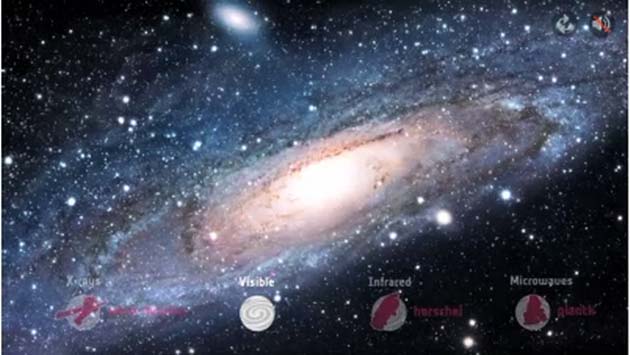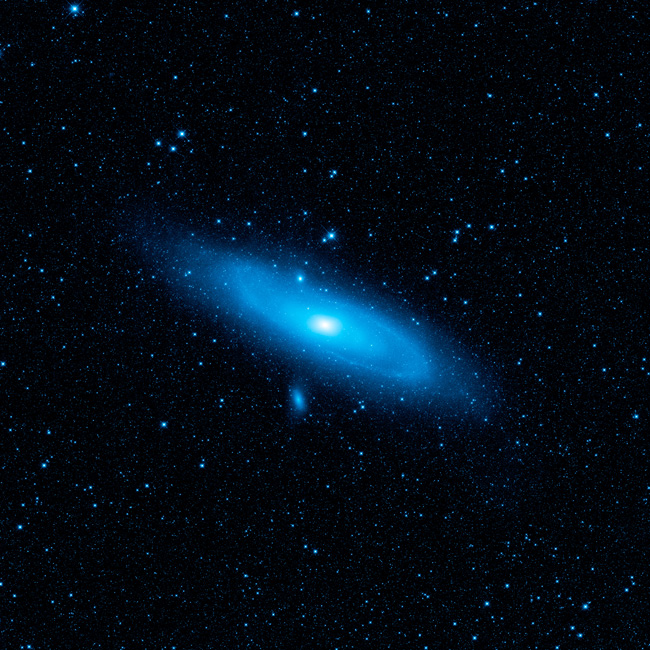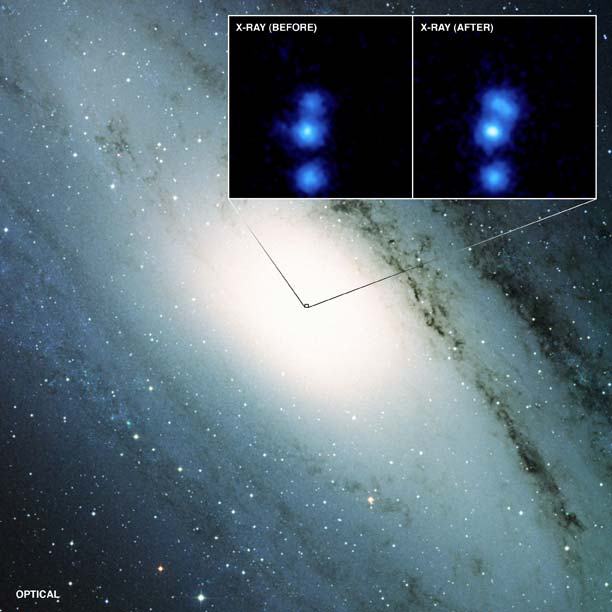Andromeda Galaxy Photos: Amazing Pictures of M31
The Andromeda Galaxy's Coat of Many Colors
The Andromeda Galaxy's Coat of Many Colors
Andromeda Strained
This image from WISE displays the Andromeda galaxy's older stellar population in blue. The disk of the galaxy shows the aftermath of a collision with another galaxy, clear from the warp in the spiral arm at the upper left side.
Collision Created Rings Around Andromeda
Infrared photographs taken with NASA’s Spitzer Space Telescope revealed a never-before-seen dust ring deep within the Andromeda galaxy. When combined with a previously observed outer ring, the presence of both dust rings suggests that M32 plunged through the disk of Andromeda along Andromeda’s polar axis approximately 210 million years ago.
Andromeda Involved In Ancient Galactic Collision
Streams of stars at the edges of the Andromeda galaxy evidence a collision between the Andromeda and a dwarf galaxy that likely took place about 700 million years ago.
Small Galaxy Punches Hole In Andromeda
Image of Andromeda Galaxy taken in visible light.
Mysterious Stars Surround Andromeda's Black Hole
The Andromeda Galaxy photographed with a 12.5-inch telescope by amateur astronomer Robert Gendler.
Dust in the Wind(ing Spiral Arms)
This WISE image shows dust speckling the Andromeda galaxy's spiral arms. The hot dust, heated by newborn stars, outlines the thin arms to the center of the galaxy.
Breaking space news, the latest updates on rocket launches, skywatching events and more!
What Makes Supernovas Go Boom
This composite image of M31 (also known as the Andromeda galaxy) shows X-ray data from NASA's Chandra X-ray Observatory in gold, optical data from the Digitized Sky Survey in light blue and infrared data from the Spitzer Space Telescope in red.
Bizarre Behavior of Two Giant Black Holes Surprises Scientists
The large image here shows an optical view, with the Digitized Sky Survey, of the Andromeda Galaxy, otherwise known as M31. The inset shows Chandra images of a small region in the center of Andromeda. The image on the left shows a sum of Chandra images taken before January 2006 and the image on the right shows a sum of images taken after January 2006. Before 2006, three X-ray sources are clearly visible, including one faint source close to the center of the image. After 2006, a fourth source, called M31*, appears just below and to the right of the central source, produced by material falling onto the supermassive black hole in M31.

Space.com is the premier source of space exploration, innovation and astronomy news, chronicling (and celebrating) humanity's ongoing expansion across the final frontier. Originally founded in 1999, Space.com is, and always has been, the passion of writers and editors who are space fans and also trained journalists. Our current news team consists of Editor-in-Chief Tariq Malik; Editor Hanneke Weitering, Senior Space Writer Mike Wall; Senior Writer Meghan Bartels; Senior Writer Chelsea Gohd, Senior Writer Tereza Pultarova and Staff Writer Alexander Cox, focusing on e-commerce. Senior Producer Steve Spaleta oversees our space videos, with Diana Whitcroft as our Social Media Editor.









